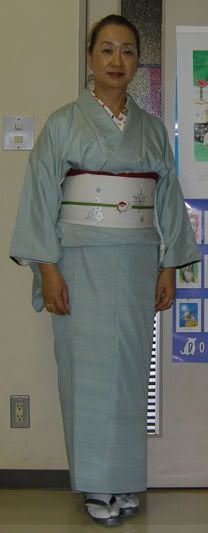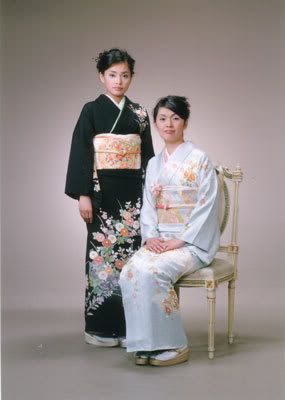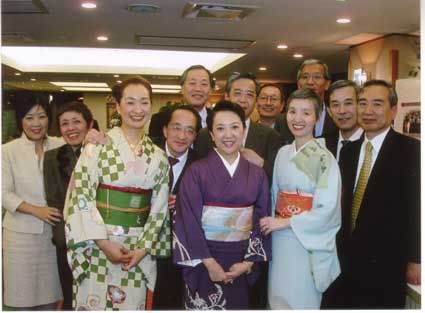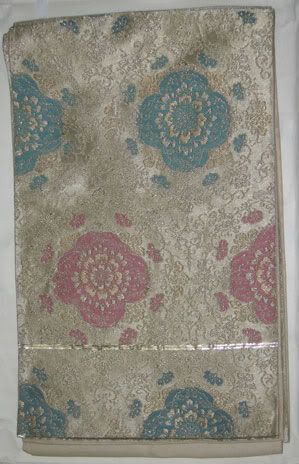LaMedicine
One Too Many
- Messages
- 1,116
Age old traditional kimono color combination scheme
This is a copy post from the clothing color combination thread, but since I never posted about ancient (and by that, I mean one thousand years ) kimono color schemes, reposting here.
) kimono color schemes, reposting here.
There is a very specific series of color combinations for kimonos--less for the kosode types that is the direct ancestor of present day kimono, but for the very traditional Heian era (10-12C) costume, generally called kuge shozoku or nyobo shozoku --called Kasane no Irome, meaning colors of layers. The color combinations were given names of flowers and plants, and which combo should be worn in which season, was strictly defined, with wearing color combos not in season being considered unsophisticated and not in good taste. If any of you have ever studied classic Japanese literature, and are familiar with The Tale of Genji, then you would have read discriptions of choosing and arranging costumes to present to the ladies, giving consideration to the appropriate color combination.
When coordinating kimonos and all the accessories they entail, if we are at a loss with what colors to coordinate, we are often told to use these traditional combination as points of reference.
There are two groups of Kasane, the first being two or three colors layered one over another. Since the fabrics were light silk, the color of the inner layer shadows the top layer resulting in subtle nuances.
The second group was for the nyobo shozoku, the most formal known as junihitoe, twelve layers. With this costume, rather than the outer color being influenced by the inner color, the effect was to have tasteful color gradation on the open end of the layered sleeves and the hemline.
The following links to a page of kasane colors of the first group. The colors on the right within the frame is the top color, the left the inner color, and the middle, the resulting effect. Sorry the text is in Japanese, but I'm sure you'll enjoy the colors.
Kasane no Irome (1)
Kasane no Irome (2) (scroll down)
The following links to the second group of kasane colors.
The color on the right is the topmost layer, and grades down to the left to the color of the innermost garment.
Kasane no Irome (3)
Kasane no Irome (4) (scroll down a bit)
This is a copy post from the clothing color combination thread, but since I never posted about ancient (and by that, I mean one thousand years
There is a very specific series of color combinations for kimonos--less for the kosode types that is the direct ancestor of present day kimono, but for the very traditional Heian era (10-12C) costume, generally called kuge shozoku or nyobo shozoku --called Kasane no Irome, meaning colors of layers. The color combinations were given names of flowers and plants, and which combo should be worn in which season, was strictly defined, with wearing color combos not in season being considered unsophisticated and not in good taste. If any of you have ever studied classic Japanese literature, and are familiar with The Tale of Genji, then you would have read discriptions of choosing and arranging costumes to present to the ladies, giving consideration to the appropriate color combination.
When coordinating kimonos and all the accessories they entail, if we are at a loss with what colors to coordinate, we are often told to use these traditional combination as points of reference.
There are two groups of Kasane, the first being two or three colors layered one over another. Since the fabrics were light silk, the color of the inner layer shadows the top layer resulting in subtle nuances.
The second group was for the nyobo shozoku, the most formal known as junihitoe, twelve layers. With this costume, rather than the outer color being influenced by the inner color, the effect was to have tasteful color gradation on the open end of the layered sleeves and the hemline.
The following links to a page of kasane colors of the first group. The colors on the right within the frame is the top color, the left the inner color, and the middle, the resulting effect. Sorry the text is in Japanese, but I'm sure you'll enjoy the colors.
Kasane no Irome (1)
Kasane no Irome (2) (scroll down)
The following links to the second group of kasane colors.
The color on the right is the topmost layer, and grades down to the left to the color of the innermost garment.
Kasane no Irome (3)
Kasane no Irome (4) (scroll down a bit)








